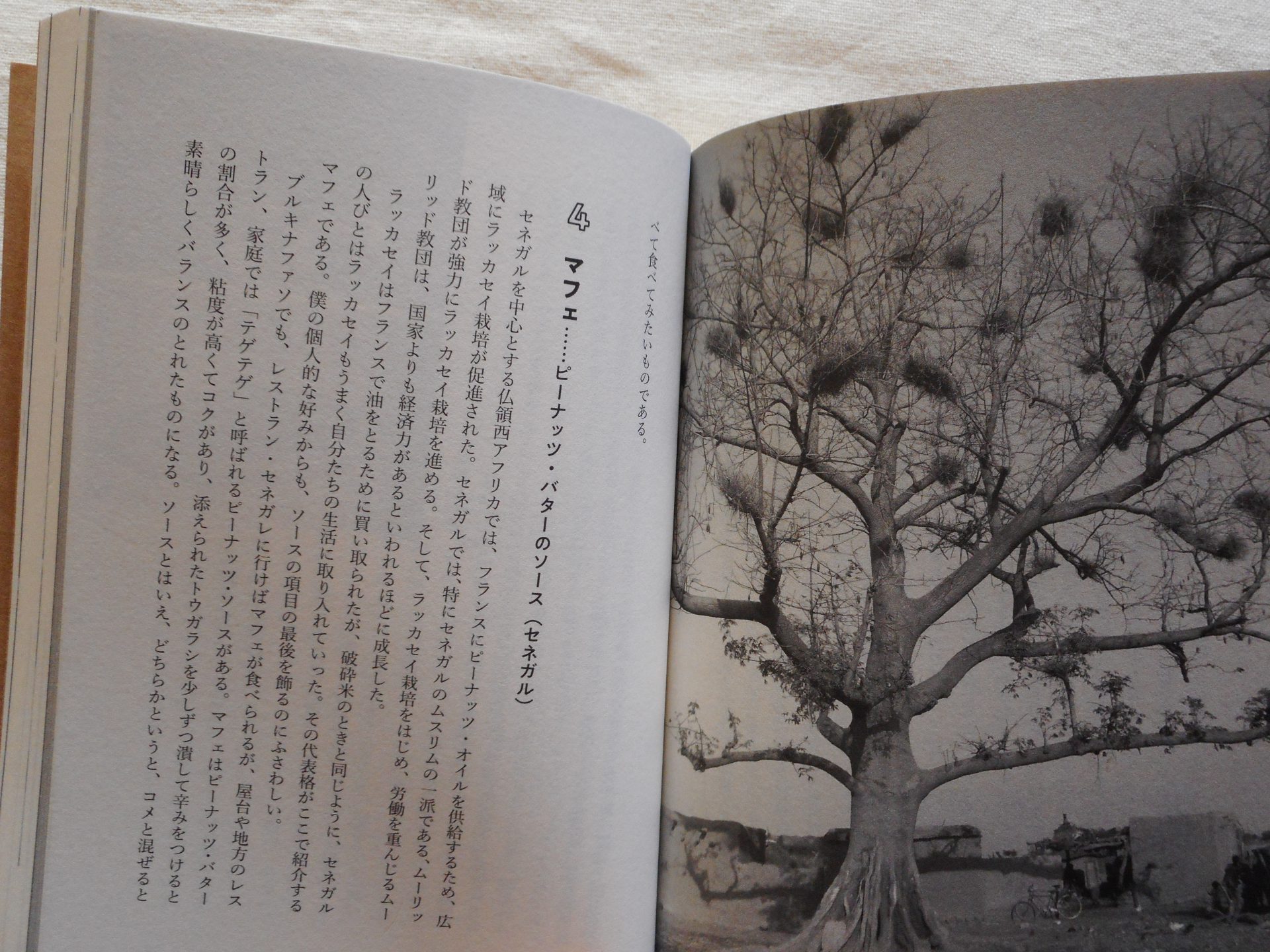[Book Series] Narrative of Terra / Terra Narrates
Series editor: Masahiro Terada
(Geo-humanities, history /
Research Institute for Humanity and Nature, Kyoto, Japan)
Publisher: Airi Shuppan (Kyoto, Japan)
Narrative of Terra, or Terra narrates.
Narrative is a speech act. Speech act is an act which was done by language.
Language is a medium which is used only by humanity. That means, narrative is narrated only by humanity.
Humanity narrates. But is that so?
Maybe all the living things on this Terra, or all the things on this Terra narrate.
To live is to narrate. To be is to narrate.
To live is to live in the time. To be is to be in the time.
To be in the time is to be in a particular process and to be in a particular process might be said to be a narrative.
Narrative of things and narrative of living things are the narrative of Terra, hence, Terra narrates the narrative of Terra.
There you are hearing it. But a technique is necessary to hear the narrative of Terra.
Or not only the technique but also a particular stance: your willingness to hear.
How has humanity been on this Terra and how should it be on this Terra?
This book series hears various voices of narrative of the Terra from various places of this globe and documents and memorizes and connects them to the future of the Terra.
Vol 3 Contents
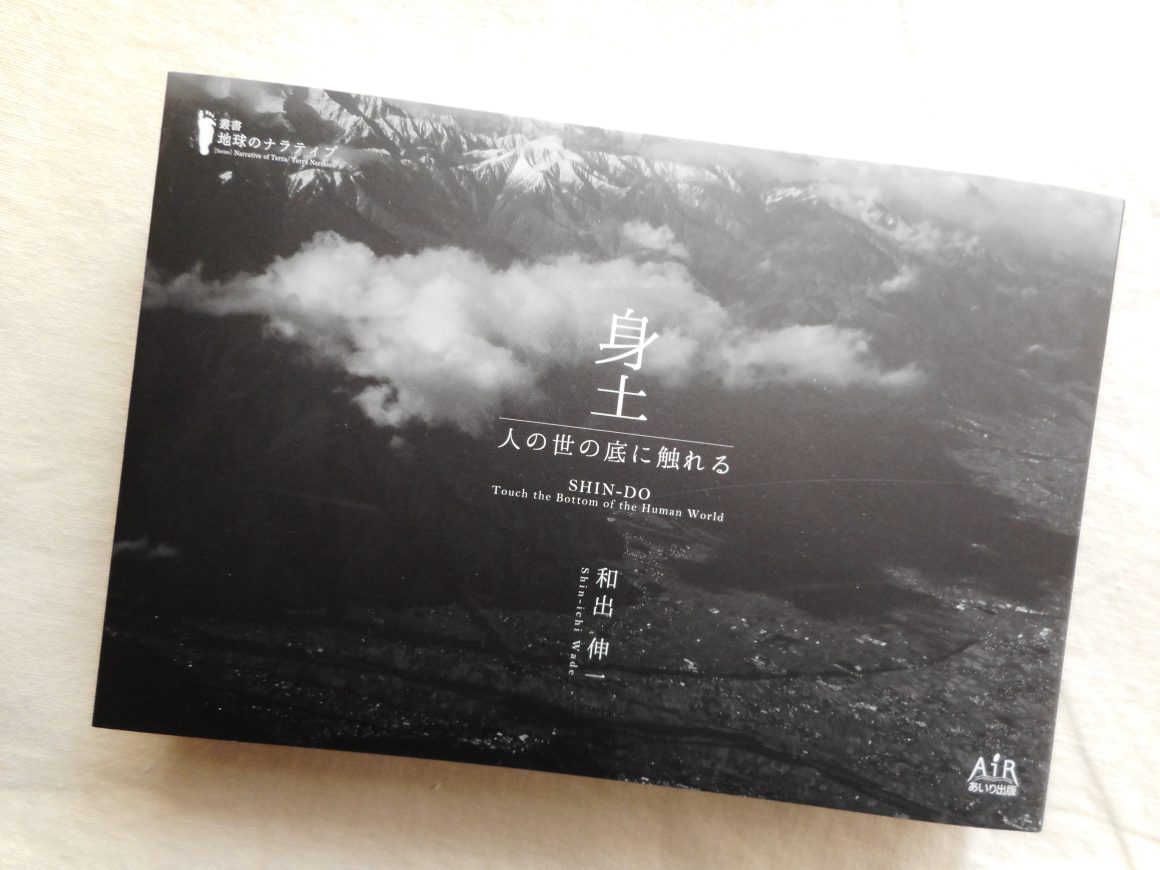

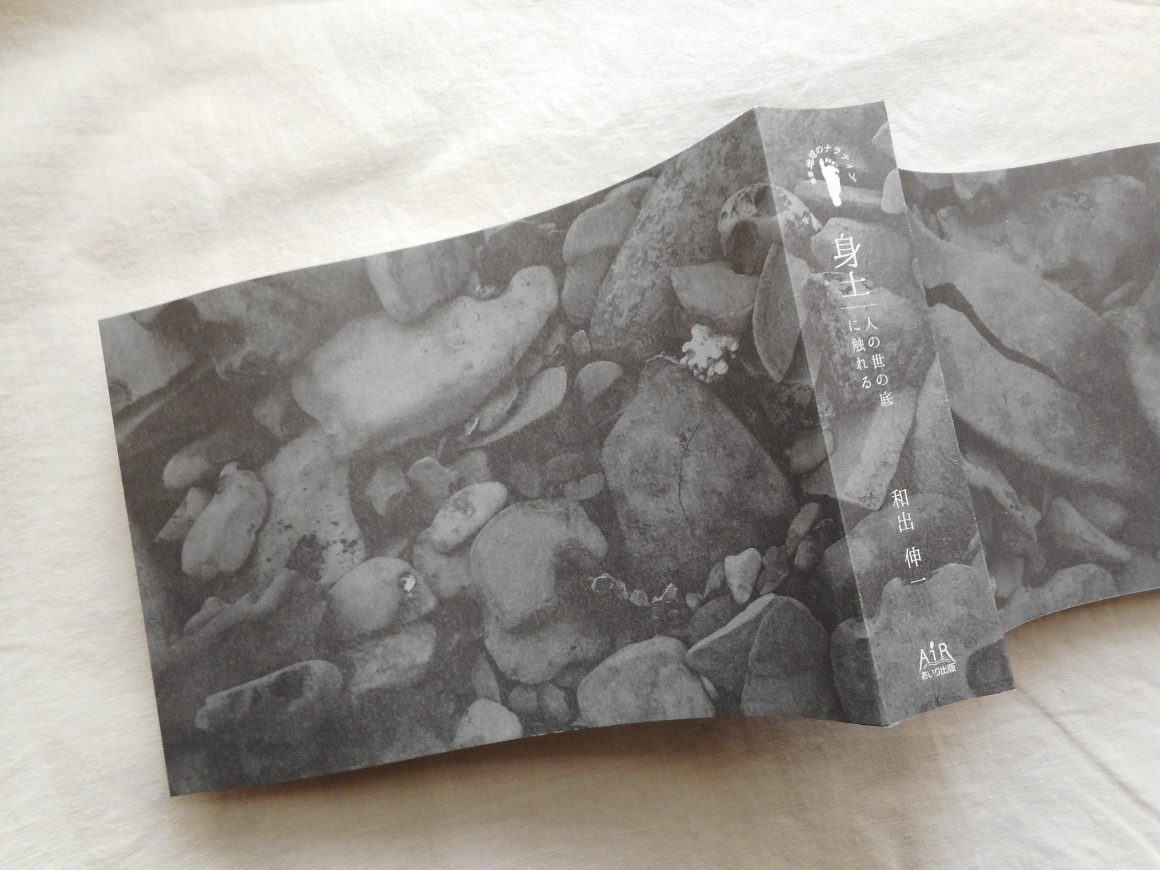
Shin-ich Wade
Shindo: Touch the Bottom of the Human World
Kyoto: Airi Shuppan
2023
382 pages
In Japanese
ISBN:978-4-86555-096-2
What exists under the bottom of the human world? Is there something or nothing? Or, is there, actually, a bottom at the bottom of the world? Shin-ichi Wade, a Kyoto based visual artist, has been having such a profound question, seeking the answer to it, and continued to conduct investigation trips around this world. His trips are the trips that which are done in this humanly, worldly world in the ordinary sense, but, at the same time, the trips done inside of the inner somewhere of his (or, human being’s) phenomenological sphere. This book is a part of the reports of his life-long seeking and makes readers to look their own insides as if seen in the outsides.
Table of Contents
Prologue: A Dream of Sky-Flying
Introduction: Picking Up Pieces of the Human World
I. Standing in Betweenness
Interlude I. Walking as an Otherness
II. Walking in the Field
Interlude II. The Bottom of the Journey Falls Out
III. Towers and Circuits
Interlude III. A Story of a Wish to Go Outside/ The Sea and the World Beyond
IV. Enter the Mountain
Interlude IV. Heat and Ashes
V. Phenomenon
Interlude V. The Most Inside and the Most Outside Are in Touch
VI. Grounding Point
Afterword: Back to the Scenery
Epilogue: Seeing Far into the Distance
Vol 2 Contents
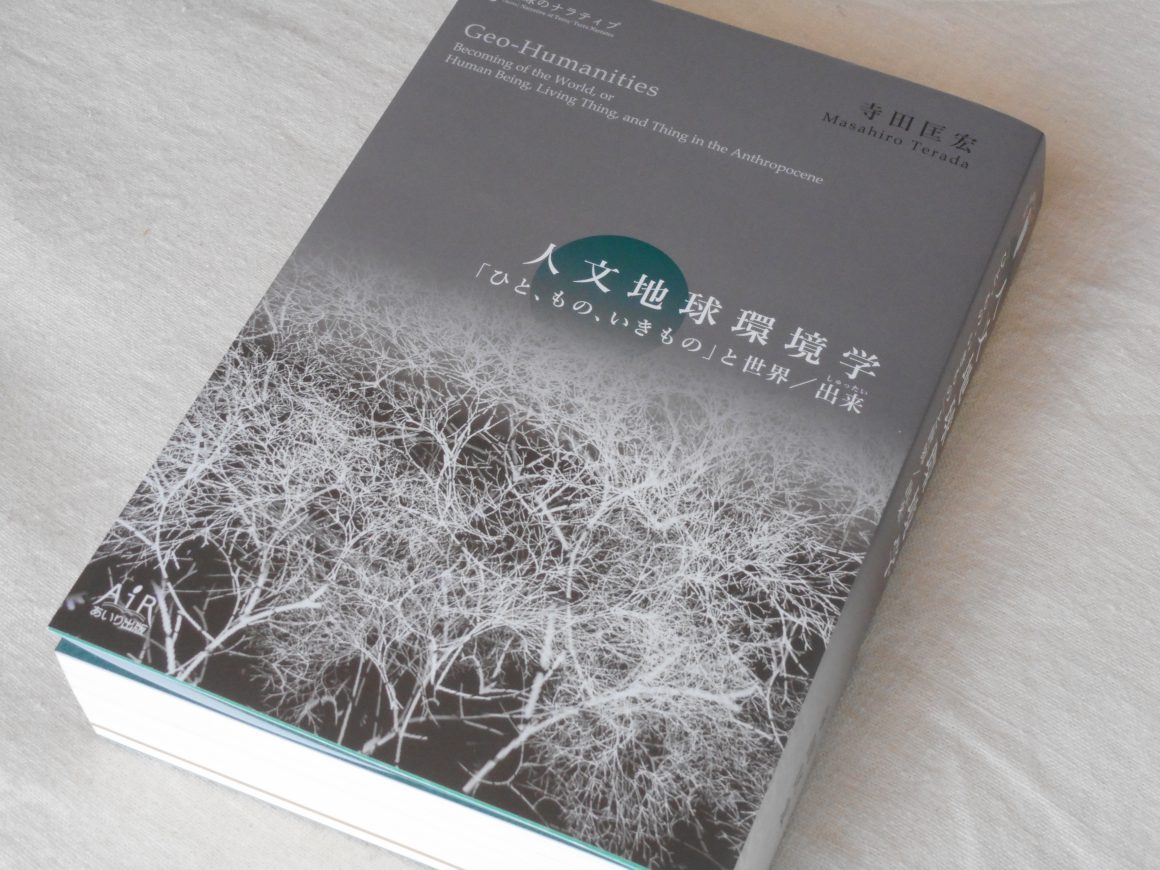
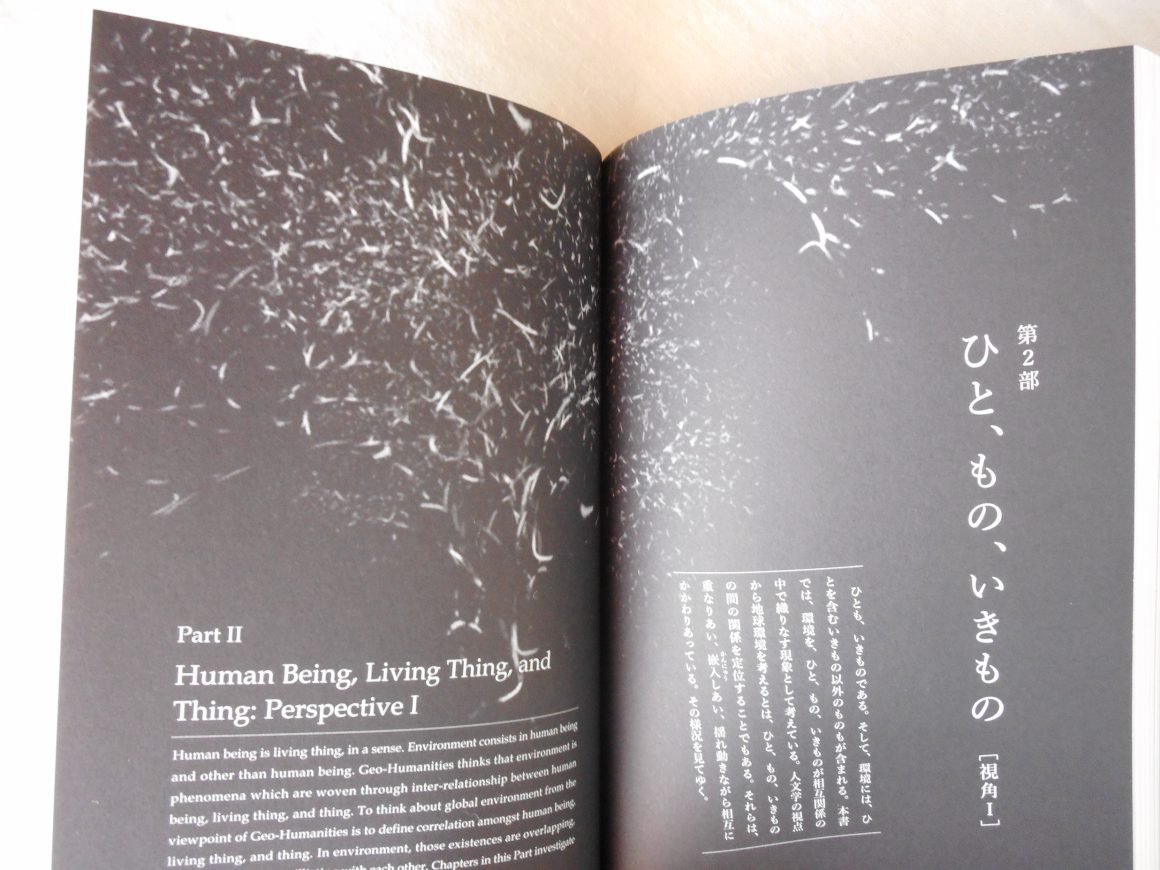
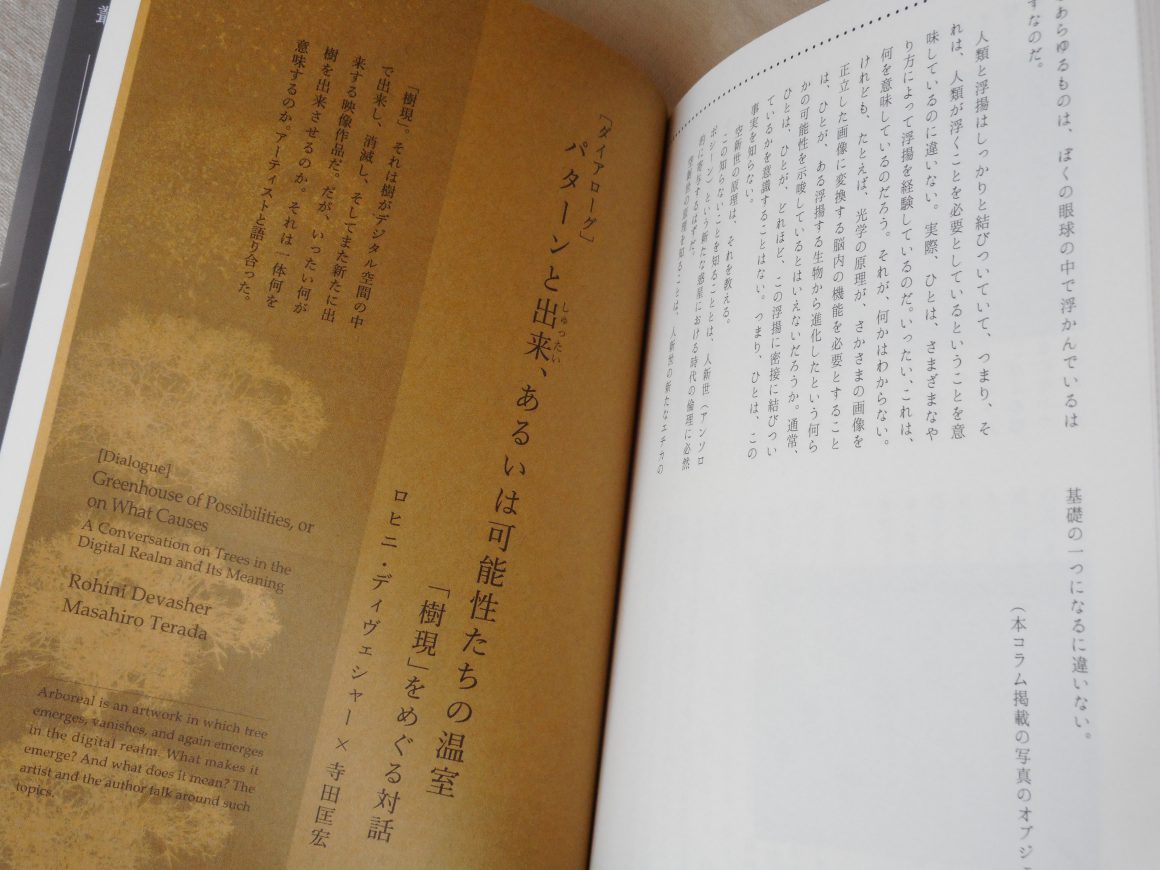
Masahiro Terada
Geo-Humanities: Becoming of the World, or Human Being, Living Thing, and Thing in the Anthropocene
Kyoto: Airi Shuppan
2021
464 pages
In Japanese
ISBN: 9784865550795
How do we think about the Anthropocene from point of view of living thing and things? In this book, referring traditional East Asian notion of humanities, or ‘jinbun‘ in Japanese, Masahiro Terada explore new scenery of the world in which human and other than human are weaving with each other.
Masahiro Terada is visiting professor of Research Institute for Humanity and Nature, Kyoto, Japan, and active member of the Living Montage.
Table of Contents
[Gallery] Arboreal by Rohini Devasher
[Introduction] Perspective of Geo-Humanities
Part I World, Milieu, and Becoming: Method I
1. 4.6 Billion Years of Earth History and History of Humanity: Anthropocene and the 6th Extinction
2. Milieu/ World, Terrestrial/ Celestial, and Fudo: Semantics of Geo-Humanities
3. Becoming of the World Seen from the Concept of Naru
Part II Human Being, Living Thing, and Thing: Perspective I
4. God, Human, Heaven, and Science: Multiple Relations of the Earthly Existence
5. Do Living Thing and Thing Have Mind?: Division and Continuity
6. Forest Talks: Living Thing, Narrative, and Story
7. Access to the World of Things: Ontology of Object
Part III Catastrophe of the Earth: Perspective II
8. Contradiction of Modernity: the Minamata “Disease”
9. Fudo of Nuclear in the Techosphere: Fukushima and Chernobyl
10. Recovery and Resilience from Natural Disaster
[Column1] Nature, Artificiality, and Wethering with You
Part IV Care of the Earth: Perspective III
11. Environment as Health: Eco-health, Human Security, and Capability
12. Global Inequality and Justice: Humano-sphere Potentiality Index
[Column2] Being Unseen and World
Part V Future: Method II
13. ‘Futurography’ and Clue
14. Habitus of Food and “Hundred Years’ Menu”
15. Martian Environment and Human Being in the Future
[Column3] Lesson from ‘Aerocene’: Floating, Flying, and the Anthropocene
[Dialogue] Process, Creation, Becoming, and Uncanny: A Dialogue with Rohini Devasher
[Afterword] Living Thing in the Books: Memoir of My Childhood Library
Vol 1 Contents
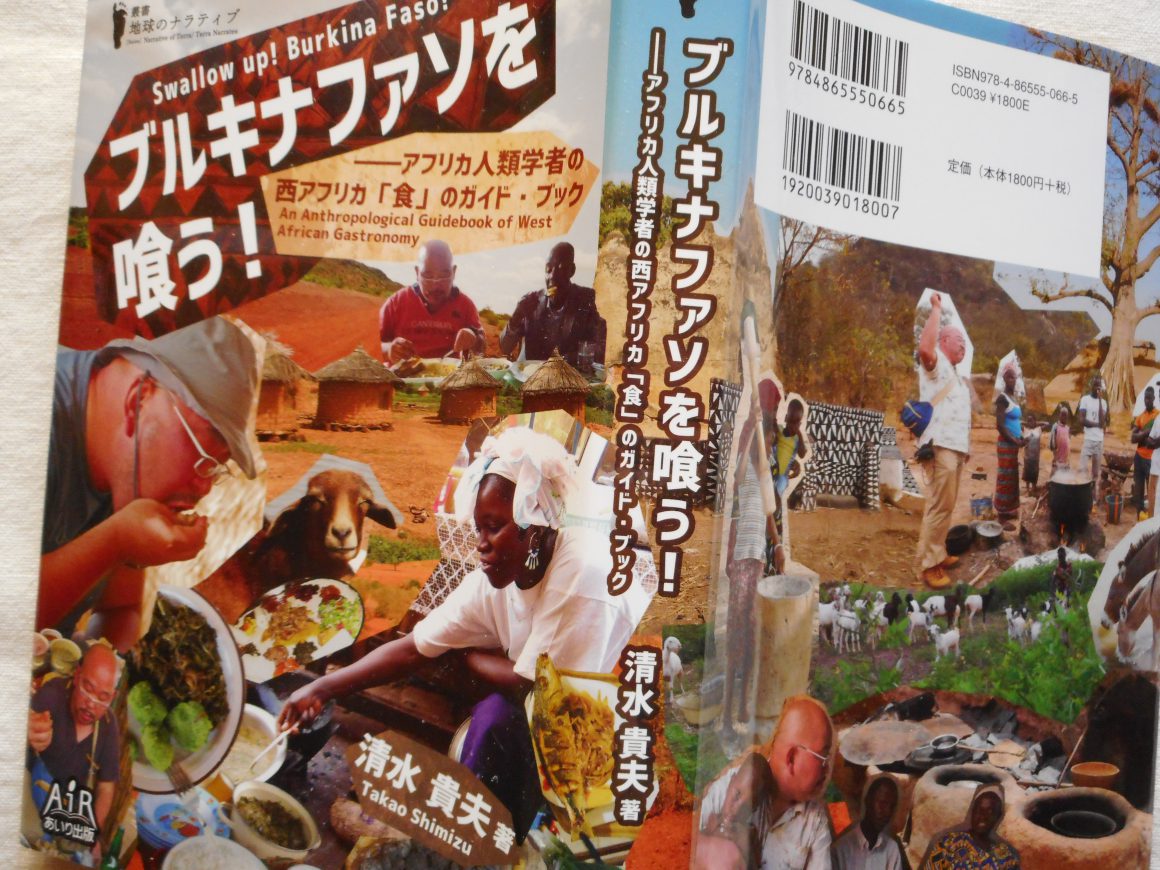
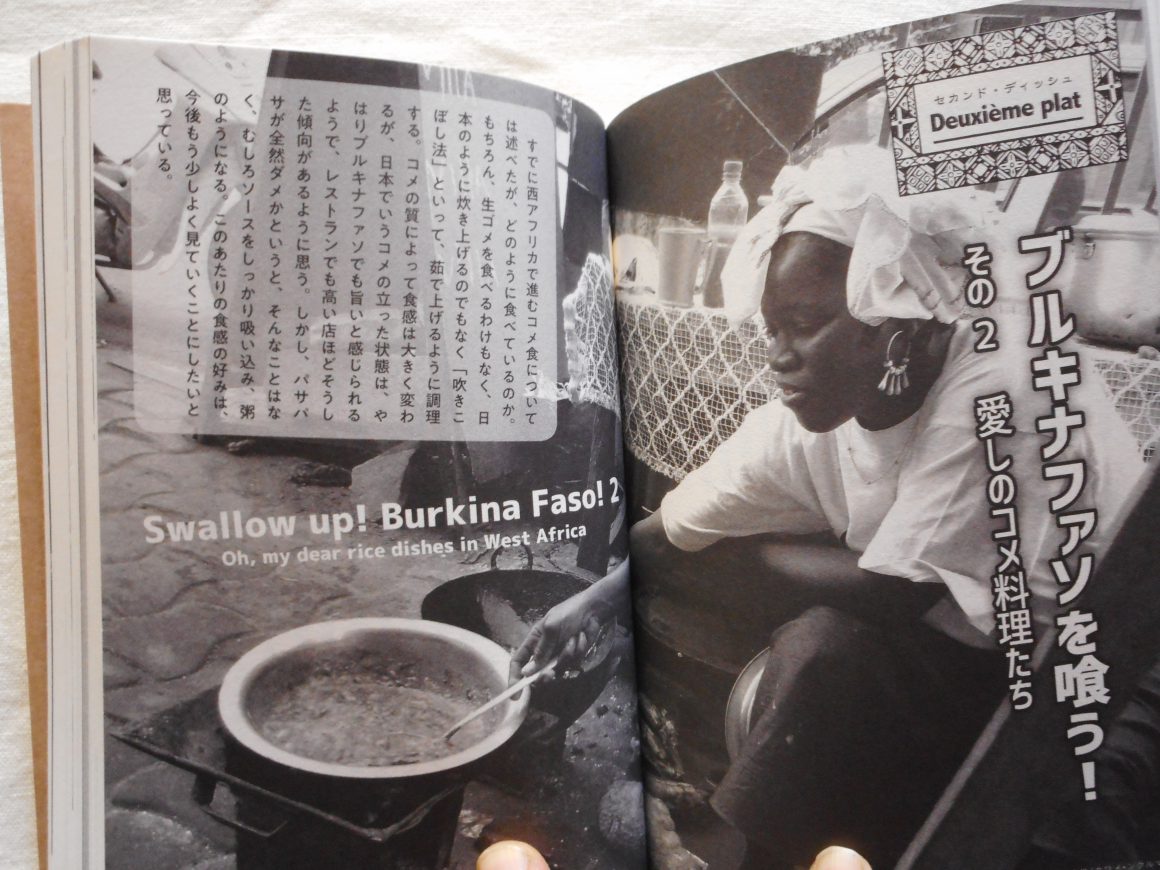
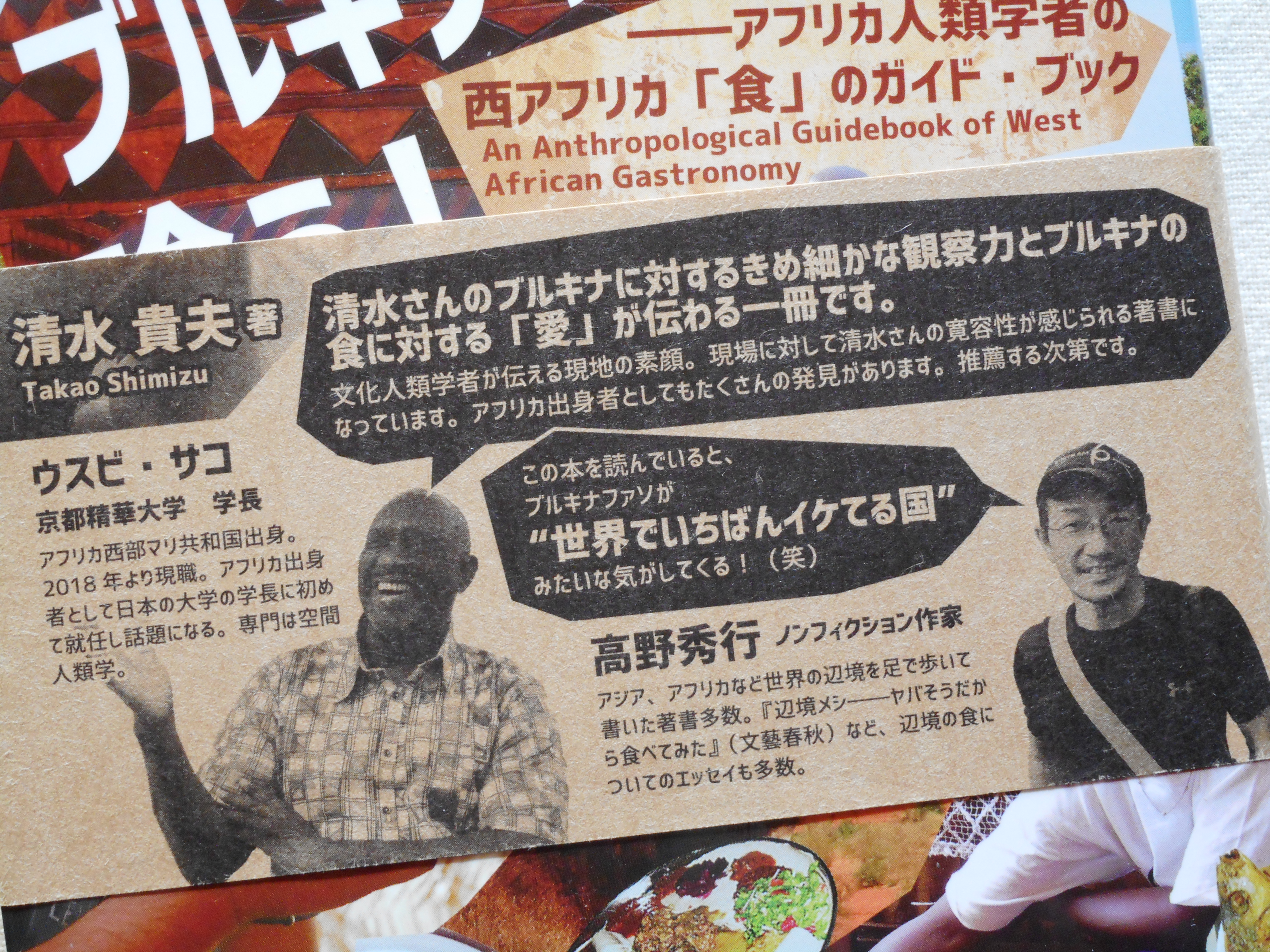
Takao Shimizu
Swallow up! Burkina Faso! : An Anthropological Guidebook of West African Gastronomy
2018
288 pages
In Japanese
ISBN:978-4865550665
Takao Shimizu is a social anthropologist, whose is focus on West African role of religion in urban society. He is also a good cook and gourmet/gourmand. Based on his love to the Burikinese/West African cuisine, this book, provides comprehensive view of its richness. This maybe the only one ever-published book in the world on Burukinese dishes.
Shimizu is an associate professor of Kyoto-Seika University, Kyoto, Japan, and an active member of the Living Montage.
Table of Contents
[Aperitif] Burkina Faso and I: A short autobiography of mine
[Hors-d’oeuvre] Burkina Faso Orientation: Past and present and my friends Burkinabe
[Plat premier] Swallow Up! Burkina Faso!— 1. Basic element of cuisine Brukina Faso
[Boisson] From Memorandum of an Anthropologist 1
[Deuxième plat] Swallow up! Burkina Faso!— 2. Oh, my dear rice dishes in West Africa
[Boisson] From Memorandum of an Anthropologist 2
[Troisième plat] Swallow up! Burkina Faso!— 3. Burkina Faso as the carrefour du goût (cross road of taste)
[Desert] Lonely Burkina Faso, or How to Walk in Burkina Faso: Basic and practical information
[Digestif] Afterword

